It’s been a busy month! But I did find some time to read. And of course, a bunch of books I had on hold at the library all came at the same time. It always happens that way. Anyways, here are some good ones:
#1 Five Days at Memorial by Sheri Fink
Wow. What a story, what a book. It took awhile to get through it, but I definitely recommend it. It got on my radar after hearing a podcast (maybe This American Life?) about what happened at Memorial Hospital during Katrina and so when I saw this book I had to get it.
The book reconstructs what happened during the 5 days at Memorial Hospital in New Orleans during and after Hurricane Katrina: when the floodwaters surrounded the hospital and flooded the lower floors, they lost power, the heat was intolerable…
“The hurricane cut off city power. The hospital’s backup generators did not support air-conditioning, and the temperature climbed…Early Wednesday morning, Memorial’s generators failed, throwing the hospital into darkness and cutting off power to the machines that supported patients’ lives.”
It was chaos. They were hearing reports that it was Marshall Law outside the hospital walls. “Thiele thought the hospital would be overtaken, that those inside it had no good way to defend themselves.”
“While the mayor commanded everyone to leave, many didn’t have cars or other means to do so, and officials knew that the city’s plans to help transport them had significant holes, including a lack of sufficient drivers. Residents who could go on their own were already stuck in traffic on the interstate leading out of town. The Superdome, the giant stadium that hosted the New Orleans Saints football team, was designated as a “shelter of last resort.” “
Helicopters would land on the helipad of the hospital roof but then refuse to take patients. “The pilots would not allow pets on board the aircraft and watercraft, creating stressful choices for the staff members who had brought them to the hospital for the storm.”
Pets were being euthanized. The nurses and doctors that stayed behind had to choose which patients could be rescued.
“The ICU filled with screams. Plywood grew wet and buckled. Water pooled on the floors. The metal window frames strained and creaked like the Titanic… The command team announced a shift in hospital operations from “assault mode” to “survival mode.” This unofficial designation reflected news they had received minutes before the meeting. An Acadian ambulance worker on-site had confirmed with his dispatchers that one of the canals in New Orleans had been breached…the sight of the water advancing toward the hospital, pushing the hurricane debris ahead of it, was like something out of a movie.”
And eventually, the rescue boats and helicopters stopped coming.
“…electronic medical records system would be useless. Paper was high technology in a disaster. The electronic medication dispensing cart, new to Pitre-Ryals’s unit, would also shut down, its stock of medicines locked securely inside it… The hospital was stifling, its walls sweating. Water had stopped flowing from taps, toilets were backed up, and the stench of sewage mixed with the odor of hundreds of unwashed bodies.”
Then, at the end, when there was hope of rescue, a few doctors and nurses chose to “speed up” the death of certain patients. Patients that had DNR’s. A patient that was morbidly obese and couldn’t be moved up through the stairwell to the helicopters.
” “When I made my mother a DNR, I did not know it meant ‘do not rescue.’ “ (one of the victim’s daughter’s said that)
“It was a desperate situation and Cook saw only two choices: quicken their deaths or abandon them. It had gotten to that point. You couldn’t just leave them. The humane thing seemed to be to put ’em out.”
The first 40% of the book was the reconstruction of those 5 days. The rest of the book was the investigation and trial and aftermath.
Reading about the truly horrific experiences these people went through (doctors and patients) during those 5 days, I can understand both sides of this argument. It was described as a war zone. I can understand being faced with a scenario where you have no idea if you will be rescued, not sure if you can save everyone, and make a decision about the sickest ones…but at the same time…those patients weren’t given the choice. So I can see how it can be seen has murder (hence the criminal charges and trial).
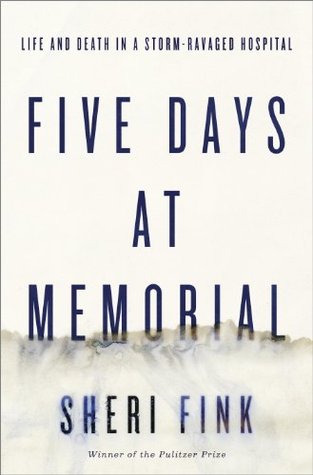
#2 Inheritance: A Memoir of Genealogy, Paternity and Love by Dani Shapiro
I heard an interview with this author on a podcast and the book sounded really fascinating. There was a long wait at the library for this book but it was worth the wait. It was a good book and I definitely recommend it. It’s an interesting memoir and it’s also an interesting discussion in medical ethics.
Dani is an accomplished writer, mother, wife. She’s in her 50’s and her on a whim, decides to do one of those DNA kits with her husband. They send it off, forget about it, and then the results come back and she discovers that she’s not genetically related to her half-sister, Susie. This opens up a can of worms she was not prepared for.
“If it was true that Susie and I were not half sisters, my father was not my father. That he was Susie’s father was without question. She looked like him. She had his eyes, and the shape of his face. She even sounded a bit like him…”
“My mind and body seemed to be disconnected. My body wasn’t the body I had believed it to be for fifty-four years.”
It turns out, her parents had difficulties conceiving and they went to a not so reputable fertility clinic in Philadelphia. Back during those days, it was common practice to mix the sperm with donor sperm. Dani, who always felt closer to her father than her mother, has now discovered she was not genetically related to the father she grew up with.
It’s a true crisis of identity and history for Dani. “Why am I? Why am I here? And how shall I live?”
” ‘It’s rare that you get an opportunity in life to stand outside yourself. It’s as if Hakadosh baruch hu is saying, Child, come sit next to me and now, look. Finding all this out is a door to discovering what a father really is. It isn’t closure—you may not get to have that—but it’s an opening to a whole new vista.’ I had been so afraid that blood would be all that mattered. Oh, how I had underestimated my remarkable aunt.”
Thus begins the search for her biological father. And the questions about her whole life (she’s Orthodox Jewish but never looked Jewish) and her heritage. It’s a very confusing, emotional time for her. But the real emotional roller coaster starts when she finds her biological father and they start corresponding through email.
The book is very interesting and a good read!
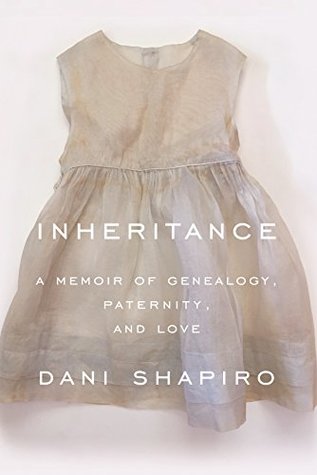
A lot of people might have heard of the Mutter museum in Philadelphia,a museum of “medical oddities”, but there was actually a pretty important doctor by the name of Thomas Mutter who played an important part in medical history.
He was orphaned at a young age and then sent to a distant relative who was basically a caregiver. Eventually he went to boarding school and then medical school. He became a gifted doctor and a surgeon and created the “Mutter Flap” to treat burn victims. It was an early method of skin grafting/plastic surgery.
“The broken. The diseased. The cursed. People who were considered monsters, even by medical definition. Mütter welcomed them all. An expert and efficient surgeon, he systematically rehearsed every procedure in his mind before beginning it.”
“Monsters. This is how the patients would have been categorized in America. Mutter was used to seeing them replicated in wax for classroom display, or hidden in back rooms away from the public eye. It was not uncommon for these patients to enter the surgical room fully prepared to die. Death was a risk they happily took for the chance to bring some level of peace and normality to their mangled faces or agonized bodies.”
He was renowned for his patient care, his surgical skill, his engaging teaching techniques in the classroom and he became the Chair of Surgery at Jefferson Medical College in Philadelphia.
“Mütter had fought hard to make sure Jefferson Medical College provided recovery rooms to all patients who offered themselves up to the knife at the school’s surgical clinic.”
He performed hundreds of surgeries on patients who were “deformed” and gave many their lives back. He was also the first surgeon to use ether anesthesia during surgery (in 1846).
“Mütter’s fight for anesthesia to be widely accepted—to be adopted by doctors and surgeons as swiftly as possible in order to end what he saw as unnecessary human suffering—proved to be a turning point in his career…It was often a guessing game to determine how much was needed to sedate the patient . . . and how little could be used to kill them.”
He was so ground breaking and fascinating and he tragically lived a short life. His collection of medical “oddities” was bequeathed to a museum which became the Mutter Museum after he died. The book also talked a lot about the time period and the beginning of modern medicine and discoveries. It was so fascinating!
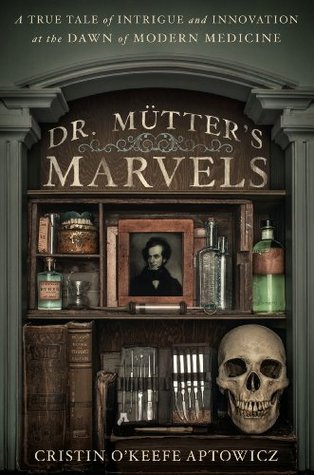
This was a very good book. It started out slow and I almost gave up but don’t give up because the story picks up and it gets very good and by the end you will be crying.
The story is a fictional telling of what it was like for native Hawaiians in the late 1800’s, early 1900’s when there was an outbreak of leprosy and they were rounded up and taken to the island of Moloka’i to live a segregated life. (I read a nonfiction book about this and it was VERY fascinating and I highly recommend it.)
Rachel is just a young girl when she contracts leprosy. She’s taken from her family and sent to Moloka’i to live. She lives in a home for girls and basically spends her life on the island. She grows up, she makes friends, she watches her friends die of the horrible disease. She come of age, she falls in love, she gets married…she has a baby and must give it up the second it’s born. The baby is then given up for adoption to a family off Moloka’i that doesn’t have leprosy.
It’s a touching, heart breaking book and I liked how it ended. It was a long book and there were definitely parts that felt like it dragged a bit and could have been edited down but the story was about a lifetime on this island, so it was kind of hard to avoid.
Would definitely recommend!
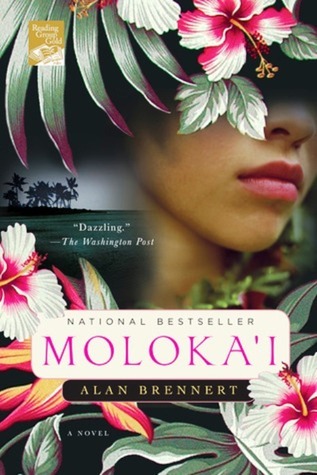
#5 My Lovely Wife by Samantha Downing
I loved this disturbing little book! What a creepy couple! Happily married couple, the husband and his wife Millicent, are living the picture-perfect life. They live in an expensive gated community. She’s a realtor. He’s a tennis instructor. They have two teenagers. They just happen to have a secret hobby: murder.
The husband, goes out to bars and hunts for women. Millicent kidnaps and murders them. But then all of a sudden, things are starting to unravel in their lives and their little hobby has consequences.
It is a gripping, creepy and enthralling book. I could not put it down! I could totally see it as a movie.
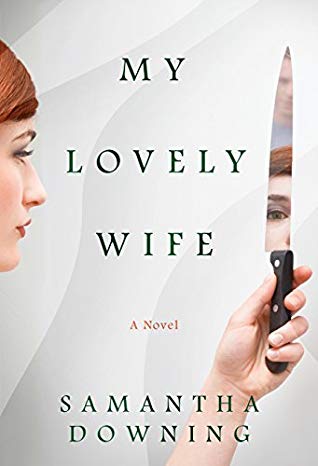
Happy Reading!
These posts have Amazon affiliate links.
emmaclaire
Okay – no light reading going on at the Lisa Eirene household this month!! All your selections sound very interesting, but I think I’d have to break them up with some fluff in between 🙂 I think the Dani Shapiro book sounds very interesting! You hear about that kind of thing happening in fiction, but not so much in non-fiction. I just finished reading The Wayward Bus, by John Steinbeck. This was my 10th Steinbeck and it was pretty different from most of the others I’ve read, but some common themes for sure. Also, at about 300 pages, it was one of his shorter ones. Next up is Stay Sexy and Don’t Get Murdered. I have not heard the authors’ podcast My Favorite Murder, but my daughter does and she thought I’d like the book. She gave me the Steinbeck as well – I lucky to have a daughter who gives books for Mother’s Day!
Lisa Eirene
I know! Some months are like that. I am reading some lighter ones right now.
Stay Sexy sounds interesting to me. I will add it!
I haven’t read any Steinbeck since school. I will have to go back and look!